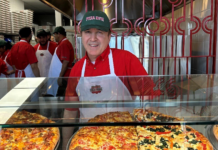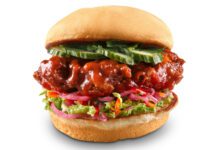If the past five years have taught foodservice operators anything, it’s that today’s business environment is more tenuous than ever, and the increasingly educated consumer is king. This is especially evident on this year’s Top 100 Report, (see p. 27) a barometer of growth in this industry for more than 40 years. Where growth was once fast and furious, today it is tempered and deliberate. Sure, operators are continuing to add units and looking to develop new concepts, but growth is marginal at best and is often achieved by stealing market share.
That message was echoed last month by Robert Carter, executive director, Foodservice Canada for the NPD Group, who spoke at the Canadian Restaurant Investment Summit (see p. 5), held in Toronto. During his session, Carter explained that consumers are visiting restaurants less often than they did a year ago (but spending more when they do go out); they’re also increasingly dining at fast-casual operations. “Consumers are in control, and the more we understand about them, the better,” he said. Interestingly, based on stats from NPD’s CREST data, consumers are eating at home more often, with 75 per cent of the meals made at home prepared in 15 minutes or less, paving the way for more opportunity to capture sales. Not surprisingly, Carter reported that after the impact of the recession, many consumers have traded down to QSR and fast-casual, with QSR garnering 4.2-billion visits, while family restaurants attracted 875-million visits.
So, what’s the upshot of these statistical patterns? The answer is simple: there’s a battle going on for share of market, and the winners will provide a key point of difference in terms of brand strategy and product offerings. More and more, we are seeing lines blur in the marketplace, with QSR operators continuing to be all things to all people; grocery stores are also infringing on the parameters of the restaurant and new competition is coming from the unlikeliest spots. In fact, according to NPD research, grocery stores are the fastest-growing category this year. Should restaurant operators be worried? You bet.
As demographics change, these factors will increasingly prevail. Currently, boomers and millennials represent 55 per cent of all restaurant visits, according to NPD. But as boomers age, what millennials deem important will further guide operating decisions. As Carter says, “Millennials are making it easier to communicate with them [through technology], and millennials are more educated consumers than in the past, which is forcing companies to become more transparent and more exciting in their offerings.”
What does that mean for the future? Menu innovation will be key and will drive more choice, improved quality and flavours; fast-casual will continue to grow as will home-meal replacement offerings and non-traditional outlets; beverage programs will become more important as consumers demand craft and specialty offerings; as always, location will continue to spur growth; and, finally, customer engagement through loyalty programs will encourage repeat business, ultimately driving success.




















